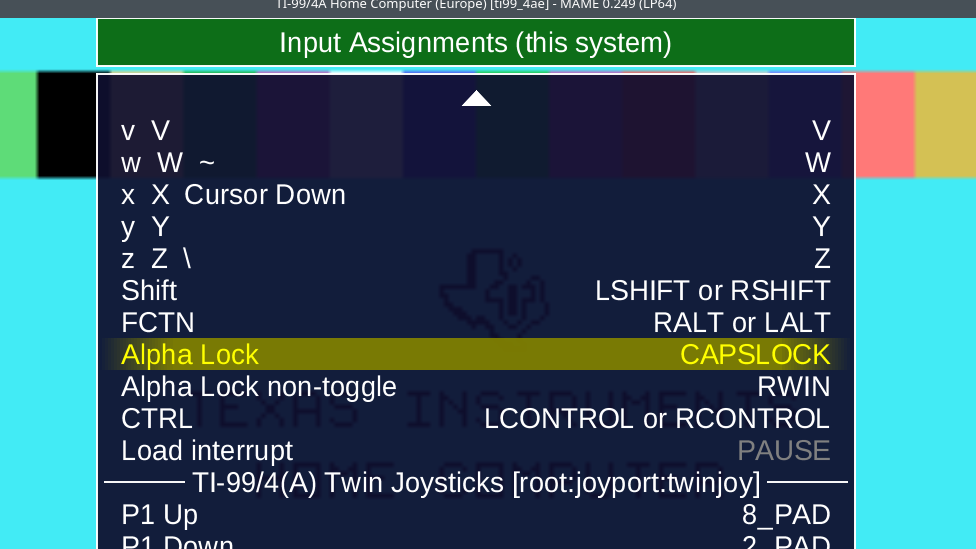You can change the input mapping of all keys during runtime using the OSD menu. Open the menu and find the entry "Input settings", then "Input Assignments (this system)" (0.249).
You will get a list of key mappings similar to this:

On the left side you can see the key in the emulation. Often, there are more than one character, which means that the key accepts a modifier, that is, Shift or FCTN. The x key, for instance, may produce a lowercase x normally, a capital X when pressed with Shift, and Cursor Down when pressed with FCTN. This key is mapped on the right side to the X key of the host keyboard.
Let's change the Alpha Lock mapping. We see that it is mapped to CAPSLOCK, which is not a good idea. We want it to be mapped to the left Windows key, which we don't need otherwise.
You can see that several keys on the host may be mapped to the same emulated key: For example, to make the emulated TI sense a pressed FCTN key, either the left or right FCTN key on the host keyboard will do - the TI does not distinguish them. On 105-key keybords, the right ALT key is usually named "AltGr".
First we remove the old mapping. Highlight the AlphaLock line as shown above (by moving the yellow marker with cursor keys or using the mouse and single-clicking on the entry). Hit DEL to remove the old mapping:

Next, we add a new mapping. Hit the RETURN key; the OSD will show two triangles, indicating that it waits for an input from you.

We now press the Left Windows key. Accordingly, this is shown on the menu:

We may now leave the OSD menu again.
By the way, if you wondered why there is a second Alpha Lock entry ("non-toggle"): This is handy when you connect a TI keyboard via a USB adapter. The Alpha Lock key is then held by its mechanics, and there must not be a toggle inside the emulator.
